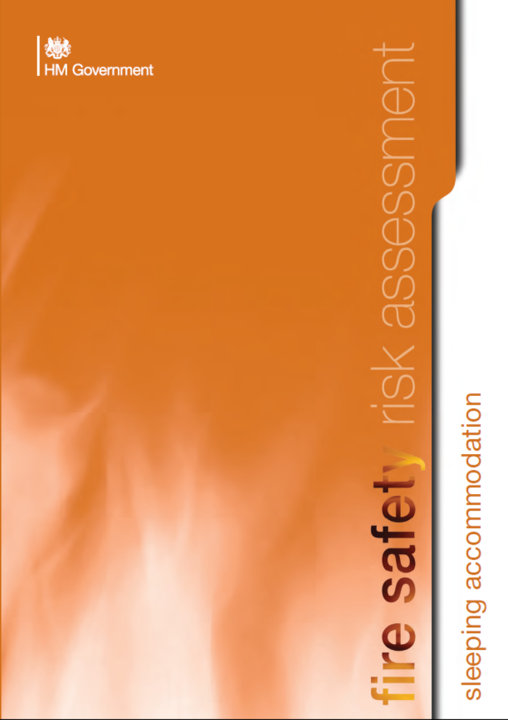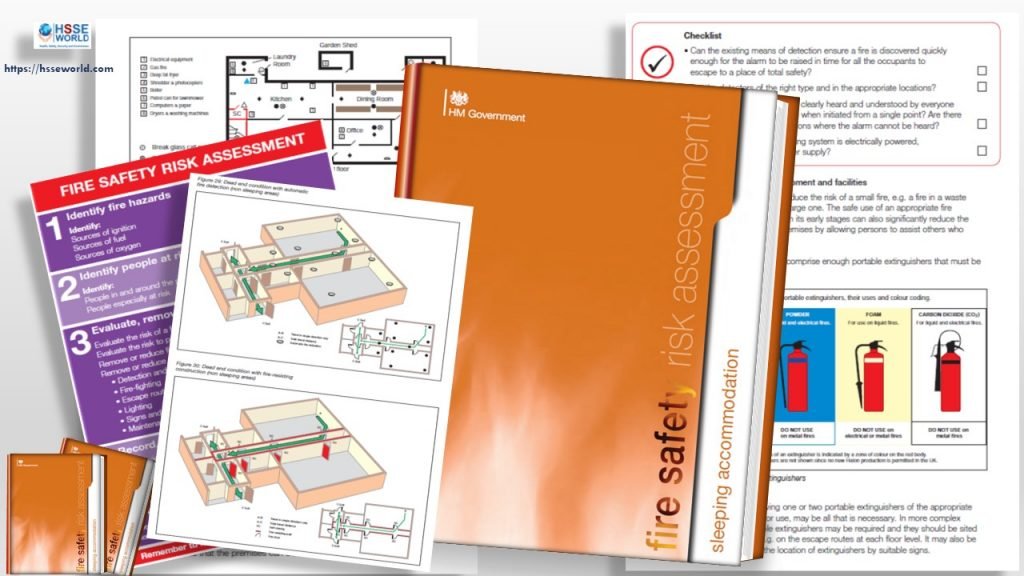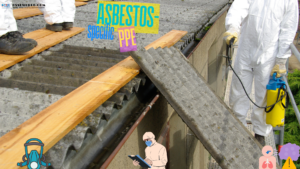E-Books: Fire Safety Risk assessment Guide – Sleeping Accommodation
6 min readFire safety Risk assessment -Sleeping accommodations guide is divided into two parts:
• Part 1 Explains what fire risk assessment is and how you might go about it.
Fire risk assessment should be the foundation for all the fire precautions in
your premises.
• Part 2 Provides further guidance on fire precautions. The information is provided for you and others to dip into during your fire risk assessment or when you are
reviewing your precautions.
The appendices provide example checklists, some detailed technical information on fire-resisting elements, and advice on historic buildings.
This guide is one from a series of guides listed on the back cover.
The rest of this introduction explains how the law applies.
Technical terms are explained in the glossary and references to other publications listed at the end of the publication are identified by a superscript number in the text.
In this Guide, reference is made to British Standards and standards provided by other bodies. The standards referred to are intended for guidance only and other standards could be used. Reference to any particular standard is not intended to confer a presumption of conformity with the requirements of the Regulatory Reform (Fire Safety) Order 2005 (the Order).1The level of necessary safety (or service) must be dictated by the findings of your risk assessment so you may need to do more or less than that specified in any particular standard referred to. You must be prepared to show that what you have done complies with any requirements or prohibitions of Order1 irrespective of whether you have relied on a particular standard.
A full list of references, e.g.1, can be found at the back of this book.


Good management of fire safety is essential to ensure that fires are unlikely to occur; that if they do occur they are likely to be controlled or contained quickly, effectively, and safely; or that, if a fire does occur and grow, everyone in your premises is able to escape to a place of total safety easily and quickly. The risk assessment that you must carry out will help you ensure that your fire safety procedures, fire prevention measures, and fire precautions (plans, systems, and equipment) are all in place and working properly, and the risk assessment should identify any issues that need attention. Further information on managing fire safety is available in Part 2 on page 41.


WHO SHOULD USE THIS GUIDE?
This guide is for all employers, managers, and owners of premises providing sleeping accommodation. Details of other guides in the series are listed on the back cover. It tells you about how you might comply with fire safety law, helps you to carry out a fire risk assessment, and identify the general fire precautions you need to have in place. It applies to premises where the main use is for sleeping accommodation.
The premises addressed in this guide include:
- all guest accommodation properties, e.g. bed and breakfasts, guest houses, inns, restaurants with rooms, and farmhouses; self-catering accommodation (individual and multiple units), chalets, flat complexes, narrowboats and cruisers, caravan holiday parks (excluding privately owned units unless they are sub-let);
- hotels, motels, holiday villages, serviced apartments, and aparthotels;
- hostels, e.g. Y.M.C.A., Y.W.C.A., youth hostels, bail hostels, or homeless persons’ accommodation;
- refuges, e.g. family accommodation centers, halfway houses;
- residential health and beauty spas, resort and destination spas;
- the residential conference, seminar, and training centers;
- student halls of residence and areas of sleeping accommodation in other training
- institutions including military barrack style quarters;
- those areas of buildings in boarding schools that provide sleeping accommodation;
- seminaries and other religious colleges;
- the common areas of houses in multiple occupations (HMO);
- the common areas of flats and maisonettes;
- the common areas of park homes;
- the common areas of sheltered accommodation, where care is not provided (where care is provided, see residential care guide); and
- areas in workplaces, where staff ‘sleeping-in’ is a condition of the employment or a business requirement, as in licensed premises and hotels (but not including tied accommodation such as separate flats, houses or apartments).
Contents
The Contents of Fire Safety Risk assessment Guide – Sleeping Accommodation
- How to use this guide 2
- Preface 3
- Introduction 4
- Part 1 Fire risk assessment 9
- Step 1 Identify fire hazards 12
- Step 2 Identify people at risk 14
- Step 3 Evaluate, remove, reduce and protect from risk 15
- Step 4 Record, plan, inform, instruct and train 32
- Step 5 Review 38
- Part 2 Further guidance on fire risk assessment and fire precautions 41
- Section 1 Further guidance on fire risks and preventative measures 42
- Section 2 Further guidance on fire-detection and warning systems 53
- Section 3 Further guidance on firefighting equipment and facilities 58
- Section 4 Further guidance on escape routes 65
- Section 5 Further guidance on emergency escape lighting 103
- Section 6 Further guidance on signs and notices 105
- Section 7 Further guidance on recording, planning, informing,
- instructing and training 108
- Section 8 Quality assurance of fire protection equipment and installation 116
- Appendix A Example fire safety maintenance checklist 117
- Appendix B Technical information on fire-resisting separation, fire doors, and door fastenings 121
- Appendix C Historic buildings 129
- Appendix D Glossary 131
- References 136
- Further reading 140
- Index 142
Download the book
Fire Safety Risk assessment Guide – Sleeping Accommodation
More Downloads
- E-Books: Healthcare Hazard Control & Safety Management
- E-Books: Safety, Health and Working Conditions Training Manual
- E-Books: Energy Efficiency in Water and Wastewater Facilities
- E-Books: Fire Service Features of Buildings and Fire Protection Systems
- E-Books: Evaluation of Fire Safety free download
- E-Books: PPE for Chemical, Biological, and Radiological Hazards free
- E-Books: Changing the Workplace Safety Culture free download
- E-Books: Site Emergency Planning Workbook
- E-Books: Load Restraint Guide
- E-Books: Essential Practices for Creating, Strengthening, and Sustaining Process Safety Culture
- E-Books: System Safety Engineering and Risk Assessment
- E-Books: Permit-Required Confined Spaces
- E-Books: Is it Safe to Enter Confined Space?
- E-Books: 5-Minute Workplace Safety Talks
- E-Books: Safety Culture and High-Risk Environments
- E-Books: Practical Guide to Industrial Safety
- E-Books: Slip, Trip, and Fall Prevention for Healthcare Workers
- E-Books: Health and Safety at Work Key Terms
- E-Books: Fundamentals of Process Safety Engineering
- E-Books: Gas Detection Hand Book
- E-Books: Occupational health and safety management systems ANSI-AIHA-z10-2012
- E-Books: Hot Work on Drums and Tanks
- E-Books: Human Fatigue Risk Management
- E-Books: Guidelines for the provision of facilities and general safety in the construction industry
- E-Books: Handbook of Training in Mine Rescue and Recovery Operations ( 2021)
- E-Books: Code of Practice for the Safe Use of Lifting Equipment – Edition 9 (Nov 2019)
- E-Books: Free Forklift Health and Safety Best Practices Guideline
- E-Books: Handbook of Hazardous Chemical Properties
- E-Books: Human Performance Improvement through Human Error Prevention
- E-Books: Principles Of Fire Risk Assessment In Buildings
- E-Books: Investigation of Occupational Accidents and Diseases
- E-Books: Radiation Protection and Safety in Industrial Radiography
- E-Books: Basic Guide to System Safety, Third Edition
- E-Books: Food Safety Management-A Practical Guide for the Food Industry
- E-Books: Safety identification: Escape and evacuation plan signs- ISO 23601
- E-Books: Safety at Work
- E-Books: The Safety-Critical Systems Handbook 4th edition
- E-Books: Fundamental principles of occupational health and safety
- E-Books: Fire Safety Risk assessment Guide – Sleeping Accommodation
- E-Books: Mental health at work series
- E-Books: Live Fire Training: Principles and Practice
- E-Books: Pre-Startup Safety Review Guide
- E-Books: Fire and Emergency Drill Manual and Building Inspection Guide
- E-Books: Health and Safety: Risk Management 5th edition
- E-Books: Fire Protection systems -Third edition 2021
- E-Books: Fire Safety Logbook templates
- E-Books: From Accidents to Zero
- E-Books: Electric Safety Practice and Standards
- Your steps to chemical safety
- E-Books: Ergonomics and Psychology Developments in Theory and Practice
- E-Books: HAZOPS Should BE fun-The Stream-Based HAZOP
- E-Books: Safety Health and Environmental Auditing
- E-Books: A Quick Guide to Health and Safety
- E-Books: Occupational Ergonomics A Practical Approach
- E-Books: Job Hazard Analysis A Guide for Voluntary Compliance and Beyond
- E-Books: Electrical Safety of Low Voltage Systems



